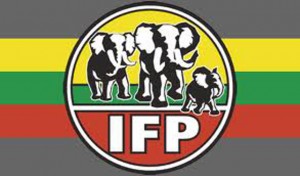AngloGold Ashanti today announced strong free cash flow in the first quarter as an ongoing focus on cost management, and leverage to weaker currencies, yielded positive results and improved margins.
Free cash flow was $70m, a marked improvement to the outflow of $40m in the first quarter of last year.
AngloGold Ashanti has delivered on a range of self-help measure to reduce debt using internally generated funds, without diluting shareholders. The company, which has 17 mines in nine countries, has made significant cuts to corporate overheads and all-in-sustaining costs as it has sought to effect sustainable improvements to cash flow and returns.
“We again generated significant free cash flow despite the lower gold price, which shows the continued success of our self-help measures to reduce debt by improving margins,” Srinivasan Venkatakrishnan, Chief Executive Officer of AngloGold Ashanti, said. “Notwithstanding our strong cost performance, we’re redoubling our efforts to ensure we continue to capture as much margin as possible.”
Production from continuing operations was 861,000oz at an all-in sustaining cost of $860/oz, compared to 928,000oz at $920/oz in the first quarter of 2015. The lower output from the continuing operations was due mainly to planned reductions from Obuasi, Tropicana and Morila mines, as well as an unanticipated drop in production from the Kibali joint venture.
Production from South Africa remained relatively flat year-on-year at 236,000oz, with safety-related stoppages remaining a disrupting factor. AISC, however, improved by 16%, to $919/oz. Mponeng, the flagship South African mine, improved its production by 34% year-on-year.
Total output of 625,000oz from the International Operations was lower due to the sale of the Cripple Creek & Victor Mine, which was sold in June of last year and contributed 41,000oz in the first quarter of 2015, whilst Obuasi, where production has been halted, contributed 17,000oz in that period. AISC for the International Portfolio improved from $836/oz in the first quarter of last year, to $822/oz in the three months to March 31 of this year.
Adjusted earnings before interest, tax, depreciation and amortisation (Adjusted EBITDA) was $378m, compared to $402m in the previous year, reflecting a 3% decline in the realised gold price and reduced production.
Net debt to Adjusted EBITDA levels ended the quarter at 1.47 times, lower than the 2.02 times recorded in the corresponding period last year. Accordingly, debt levels remain well below the covenant of net debt to Adjusted EBITDA of 3.5 times under the company’s revolving credit agreements, further underlining the success of the decisive, deleveraging efforts.
SAFETY
Regrettably, there was a fatality at TauTona during the quarter, indicating that there remains much room for improvement. Work continues on the search for innovative ways to reach our ultimate goal of zero harm in the workplace. Despite this setback, there were some notable safety successes, including both Mponeng and the Vaal River operations each reaching one million fatality free shifts, while Continental Africa recorded not a single lost-time injury during the quarter.
OUTLOOK
The outlook for the full year remains unchanged as follows: production between 3.6Moz to 3.8Moz; total cash costs between $680/oz and $720/oz and AISC between $900/oz and $960/oz, assuming average exchange rates against the US dollar of 15.00 (Rand), 4.00 (Brazil Real), 0.70 (Aus$) and 14.90 (Argentina Peso), with oil at $35/bl average for the year, based on market expectations. The impact of the Savuka section of Tau Tona seismic event on 29 April 2016, is still being evaluated and assessed.








